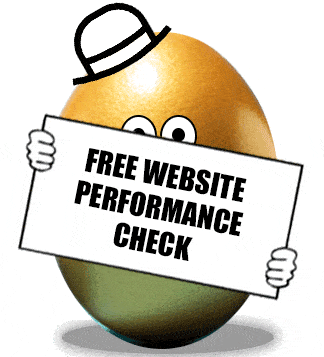Website Design Crucial Stages
Are you are considering improvements to your website, or possibly even completely redesigning it? If yes where is the correct place to start? In this article we consider website design crucial stages.
With numerous components that make up a website, it can be difficult to know where to start or even how to begin planning out your website strategy.
I have created this article on Website Design Crucial Stages to help you evaluate the activities you need to complete in order to tackle revamping or improving the strategy of your website.
This article is a part of our website marketing series. The blogs Website Marketing Strategies and Website Marketing Techniques may be of use along with this article.
Step 1: What do you want visitors to do
The very first thing that you must do when developing your website strategy is to determine the three primary actions you want people to do on your website. Essentially we are looking to identify and develop the Calls To Action (CTA)
Do not try and skip this step or move forward to another step without getting these established or you will create a disjointed strategy or even worse build a confusing customer journey.
The best approach is to identify the three most important actions that you want people to take whilst on your website. Importantly remember all these three things should help towards the greater goals for the website
Scenario1: If your goal is to generate sales from your website, the top three actions should all be steps in the process toward getting someone towards becoming a customer.
Now for each of these, back up and identify the different pathways a person might take to end up in that place.
Scenario 2:
If your goal is getting users to request a “product” demo, you might look at the ways they’d ideally end up in a place where they are ready to request a product demonstration. An example customer route
- Recognise that we need to find ways to improve a production process
- Research the problem ( statistics indicate that over 80% of B2B research incorporates an online element)
- Find useful information about how to “increase productivity within this “production process”
- Learn about a product / system / product approach that can help complete the process more easily
- Read, Watch and learn about how that product solution applies to my production process
- Read, watch and understand how the product works, and the most important features
- Once you have identified that the features appear to be a good fit, establish how much the product solution costs
- Request a live demo with a sales person ( this could be on site, off site, a zoom call or even a WhatsApp walkaround demo
Important: There could be multiple routes and paths to get to the same endpoint (this is why listing out your steps is so important).
Spending time putting in depth thinking as to what a real buyer would go through and, most importantly, what they would want to see at each step, will give you a detailed insight into how to build your website strategy to support that journey.
Step 2. Website structure
Your goal is to create a website structure that allows users to move as easily and quickly as possible to complete the three primary things identified in Step 1.
Website strategy almost always begins here, as it should. You need to start with a map for how someone will navigate the pages of your website in order to know which pages to even create. There are a number of tools that can be used to help you complete site page structure ( Slickplan, Google Docs) or you can even use a good old whiteboard or spreadsheet. A good strategy for website structure should help you visualise a number of things:
- How your main navigation menu (or sub menus) will work
- The organisation and structure of information within your website
- New pages that will need to be created
- The types of pages required ( i.e. content rich, highly visual, block structure etc)
- Content and links that will be featured within the footer
Your website structure documentation will outline
- pages you need to create,
- pages that already exist on your website.
- pages that are no longer relevant to be seen ( note for these pages you may need to look at redirects, especially if they have some authority / ranking)
In summary this is your opportunity to take stock of what you have and what works well, and layer in your plans new pages / content that will help the customer journey and complete the identified key actions.
Website structure important pages
- Home page (consider the fact that should be as easy as possible to get from this page to the specific content they are looking for )
- Category pages that contain information on the sub categories you provide
- Sub category pages ( if required ) that contain information on the product or services you provide
- Product or service pages containing detailed information providing sufficient information to help a user understand if the product is suitable
- About us – whilst this may seem as unimportant having About information on your website may carry Google benefits
- Pricing pages – a very contentious issue which I cover in a separate news article as there are many who don’t want to showcase pricing
- You may have just one page that explains all pricing options ( prices from)
- A page for each product or service, or this may very well be included on your individual product pages ( specific prices )
- Comparison pages help people compare your brand, your services or products to other alternative options that exist
- Self-identification pages based upon a single unique type of visitor that provides the information that specifically applies to them. Think of this from the following perspectives ( Pain point, use case, your customers audience, by role or persona, by industry or company size etc)
- A resource area that allows a user to filter through and find helpful and informative content you’ve created
- Landing pages or Bottom of the funnel (BOF) offer pages where the aim is to convert visitors into contacts ( by capturing contact details “email”)
- News page – for B2B seeing up to date, relevant content shows that you are still in business
- Contact Us – note contact details shouldn’t just be on the contact page
- The above are just a few of the page types, there are many other page types that may be required for your business
Step 3. What’s going on your pages
Once you have identified the types of pages you need, it is time to think about the information content and format that goes on those pages. The information you gathered in Step 1 will help massively in this process.
For each and every page, you need to think through
- What information a user will want to see / find on that particular page,
- What their next step should be,
- How to move them to that step.
Ask the following questions to help decide what to put on each page,
- How did the user end up on this specific page? Have they got to it through search, direct link, a third party etc. Only a percentage of traffic will land on your home page. So if they land on an internal page first what will they find.
- Why did they choose to come to this page? Have they been directed to it from an internal link, was it a navigation tab, a linked image etc
- Where should they be going next? For ecommerce this can be quite simple and local category / sub category / product A – product B . For other sites it can be more complicated
- What information do they need in order to be comfortable taking the next step?
- How can I make that next step as clear as possible for them? Buttons, Icons, Diagrams, Imagery , Fancy dynamic glowing icons that swirl and flash etc
With these questions you should be able to get a pretty good idea of what kinds of information should appear on the page, what calls-to-action you should feature, and how to keep helping the user moving through their website journey. Focus on reducing noise, and helping make the next step in the path as clear as possible to the user.

Step 4. Technical (Functionality) setup and launch plan
If you are redesigning your website this is particularly important. You should complete all of the previous steps in your strategy and identify all important functionality needs required to accomplish the items in your strategy.
Common website functionality elements are:
- Integrations between tools – E.g. a booking system to SMS / email notification
- Support for e-commerce – E.g. Woo Commerce, to a shipping platform and Stripe
- Interactive functionality – E.g. clickable maps, self configurable selection tools)
- Forms and contact collection – E.g. Gravity forms and Mailchimp
- Subscription and email follow-up – E.g. Woo Subscription and Mailchimp
- Video hosting platforms and tools – E.g. YouTube / Vimeo
- Database functionality – E.g. Xero to CRM
You don’t know, what you don’t know
For the above you will need the help of someone technical to recognise all of these items or identify areas of your strategy that would require them. At this stage the adage of “You don’t know, what you don’t know” is spot on
It is critical that you identify all of the functionality needs you have (or potential desired future functionality) and determine the best approaches to manage your website that allows for those things. Failure to do this can result in short term inconveniences or long term performance issues.
Don’t make that mistake of doing Step 4 the functionality element first or looking at the customer journey without considering the functionality. Selecting technology without a strategy may result in you picking something that will not allow you to do the things you need (or at minimum make it very hard to accomplish some of your goals). Your strategy and the technology you need to support it are intertwined. The decision must be made together.
Website Design Crucial Stages In Summary
When building your website strategy there are many things to consider, so if you are feeling a bit overwhelmed don’t be stressed out
If you keep in mind one simple guiding light WWTBW: What would the buyer want? This will help you make the right decisions at each stage in the process. As a buyer think about the last time you visited a website. What did you want? Use that perspective for everything you do.
Stop making decisions based on what the business wants from its website and start thinking about what you would want as a buyer.
Keep in mind your website is never finished, and you should constantly be adding new items to your website strategy. By starting with the right foundations and elements will make changes and improvements much easier. For more information contact Andrew Goode

FREE Website Performance Check
- Speed plays an important part in website performance how well does yours perform on desktop and mobile?
- Is your site mobile responsive if not how many customers are you losing?
- Is your site HTTPS?
- With GDPR in place is your site legally compliant?
- Find out about loads more website performance issues






